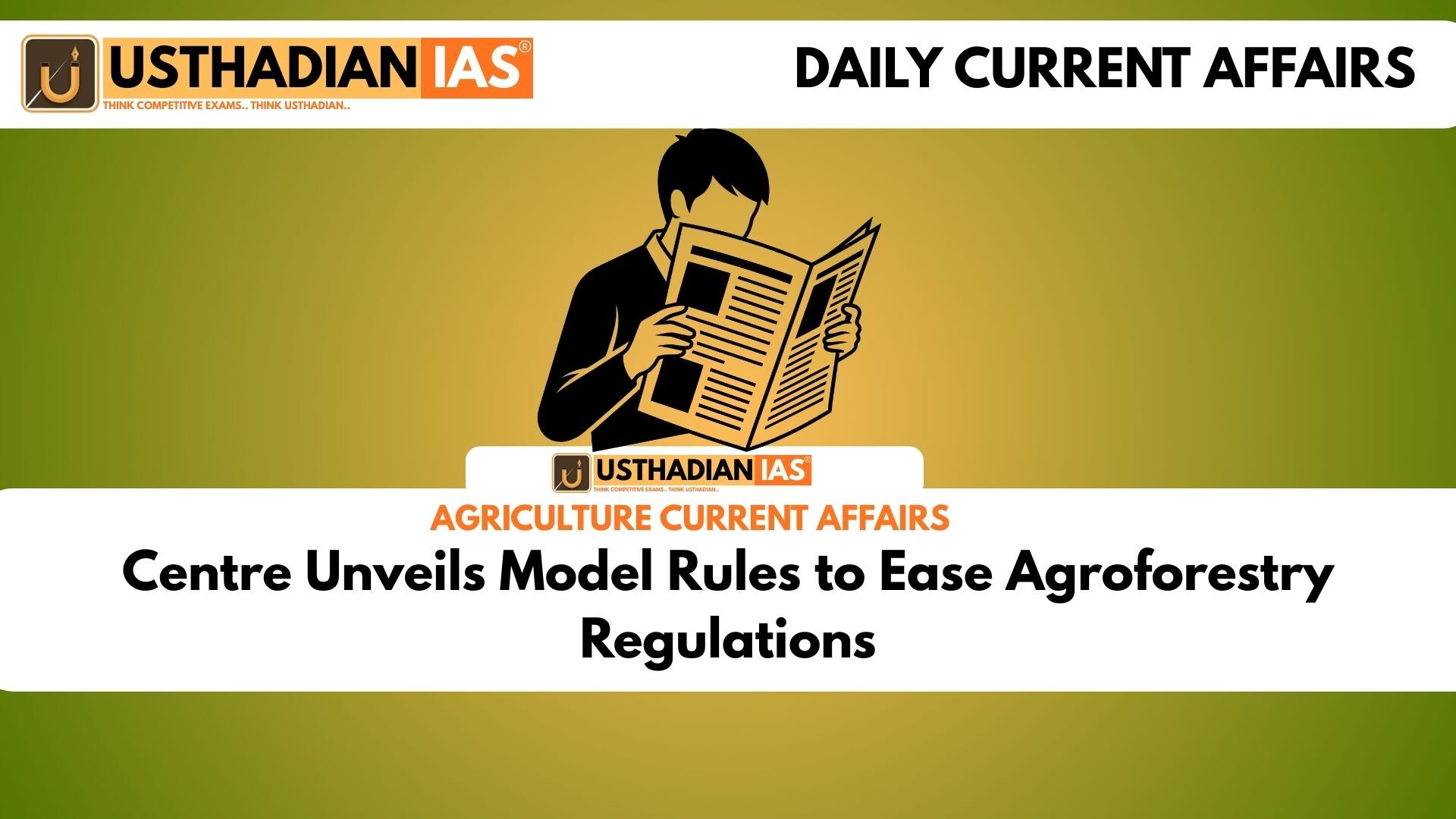Government push for agroforestry reforms
Centre Unveils Model Rules to Ease Agroforestry Regulations: The Ministry of Environment, Forest and Climate Change (MoEFCC) has released new Model Rules to regulate tree felling in agricultural lands. This initiative simplifies procedures for agroforestry, helping farmers integrate trees with crops without bureaucratic delays.
The rules aim to strengthen rural livelihoods, support timber production, and improve ecological sustainability. It is a step towards India’s commitment to climate goals while improving ease of doing business in agriculture.
Objectives of the new framework
The primary aim is to streamline permissions for tree harvesting on farmland. This will boost farmer participation in tree cultivation and encourage environmentally responsible agriculture.
Another objective is to use digital platforms like the upcoming NTMS Portal to bring transparency, traceability, and better compliance in agroforestry-related permissions.
Challenges that needed reform
In the earlier framework, farmers needed multiple approvals to harvest trees grown on their own lands. This discouraged plantation of timber species and reduced the economic potential of agroforestry.
Static GK fact: Agroforestry contributes to soil fertility, water retention, and carbon sequestration, making it vital for sustainable agriculture in India.
Key features of the model rules
These Model Rules provide States and Union Territories with a structured, uniform guideline.
A major provision is the mandatory registration of plantations on the NTMS Portal, including:
- Ownership documents
- Geo-tagged images
- Location via KML files
- Tree species and plantation size
The process will be entirely online, eliminating unnecessary delays.
Static GK Tip: The Wood-Based Industries Guidelines 2016 laid the initial framework for industry-level timber use, which is now being extended to farmland through this initiative.
Verification and oversight mechanisms
The new rules propose the formation of State Level Committees to oversee the implementation. Registered plantations will be verified by empanelled agencies, whose work will be supervised by Divisional Forest Officers (DFOs).
This multi-layered oversight ensures the legitimacy of operations while maintaining environmental checks.
Economic and ecological impact
By empowering farmers, the rules support rural income growth. Domestic timber production is expected to rise, reducing India’s dependence on imports and helping wood-based industries secure local raw materials.
Moreover, this policy aligns with India’s targets under the Nationally Determined Contributions (NDCs) to increase tree cover and fight climate change.
Static GK Tip: India’s forest and tree cover was 24.62% of its geographical area as per ISFR 2021, with agroforestry contributing significantly in non-forest zones.
A strategic move for sustainable development
This reform is a step towards balancing economic growth and environmental protection. With clear guidelines, digital tools, and reduced red tape, the Government hopes to make agroforestry a profitable and scalable practice for India’s farming community.
Static Usthadian Current Affairs Table
Centre Unveils Model Rules to Ease Agroforestry Regulations:
| Topic | Detail |
| Announcement Date | 29 June 2025 |
| Issuing Ministry | Ministry of Environment, Forest and Climate Change |
| Purpose | Simplify tree-felling norms in agricultural lands |
| Digital Platform | National Timber Management System (NTMS) Portal |
| Data Required | Land ownership, KML files, geo-tagged images |
| Monitoring Authority | Divisional Forest Officers |
| Verification Agencies | Empanelled by state governments |
| Policy Benefit | Boost timber production and reduce import reliance |
| Static GK Reference | Wood-Based Industries Guidelines 2016 |
| Environmental Impact | Supports India’s NDC goals and tree cover expansion |








